
The British Empire was composed of the dominions, colonies, protectorates, mandates, and other territories ruled or administered by the United Kingdom and its predecessor states. It began with the overseas possessions and trading posts established by England between the late 16th and early 18th centuries. At its height it was the largest empire in history and, for over a century, was the foremost global power. By 1913 the British Empire held sway over 412 million people, 23% of the world population at the time, and by 1925 it covered 35,000,000 km2 (13,500,000 sq mi), 24% of the Earth's total land area. As a result, its constitutional, legal, linguistic, and cultural legacy is widespread. At the peak of its power, it was described as "the empire on which the sun never sets", as the sun was always shining on at least one of its territories.
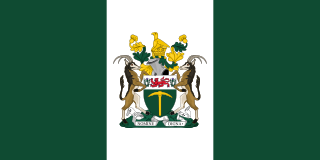
Rhodesia, officially from 1970 the Republic of Rhodesia, was an unrecognised state in Southern Africa from 1965 to 1979, equivalent in territory to modern Zimbabwe. Rhodesia was the de facto successor state to the British colony of Southern Rhodesia, which had been self-governing since achieving responsible government in 1923. A landlocked nation, Rhodesia was bordered by South Africa to the south, Bechuanaland to the southwest, Zambia to the northwest, and Mozambique to the east.

The British Commonwealth Air Training Plan (BCATP), or Empire Air Training Scheme (EATS) often referred to as simply "The Plan", was a massive, joint military aircrew training program created by the United Kingdom, Canada, Australia and New Zealand, during the Second World War. BCATP remains as one of the single largest aviation training programs in history and was responsible for training nearly half the pilots, navigators, bomb aimers, air gunners, wireless operators and flight engineers who served with the Royal Air Force (RAF), Royal Navy Fleet Air Arm (FAA), Royal Australian Air Force (RAAF), Royal Canadian Air Force (RCAF) and Royal New Zealand Air Force (RNZAF) during the war.

Northern Rhodesia was a protectorate in south central Africa, formed in 1911 by amalgamating the two earlier protectorates of Barotziland-North-Western Rhodesia and North-Eastern Rhodesia. It was initially administered, as were the two earlier protectorates, by the British South Africa Company (BSAC), a chartered company, on behalf of the British Government. From 1924, it was administered by the British Government as a protectorate, under similar conditions to other British-administered protectorates, and the special provisions required when it was administered by BSAC were terminated.

The Colony of Southern Rhodesia was a land-locked self-governing British Crown colony in southern Africa, established in 1923 and consisting of British South Africa Company territories lying south of the Zambezi River. The region was informally known as south Zambesia until annexed by Britain at the behest of Cecil John Rhodes's business, the British South Africa Company. The bounding territories were Bechuanaland (Botswana), Northern Rhodesia (Zambia), Moçambique (Mozambique), Transvaal Republic.

The Rhodesian Bush War—also called the Second Chimurenga and the Zimbabwe War of Liberation—was a civil conflict from July 1964 to December 1979 in the unrecognised country of Rhodesia . The conflict pitted three forces against one another: the Rhodesian white minority-led government of Ian Smith ; the Zimbabwe African National Liberation Army, the military wing of Robert Mugabe's Zimbabwe African National Union; and the Zimbabwe People's Revolutionary Army of Joshua Nkomo's Zimbabwe African People's Union.
The Rhodesian African Rifles (RAR) were a regiment of the Rhodesian Army. The ranks of the RAR were recruited from the black African population, although officers were generally from the white population. The regiment was formed in May 1940 in the British colony of Southern Rhodesia.
The Southern Rhodesia Legislative Council election of 30 April 1920 was the seventh election to the Legislative Council of Southern Rhodesia. At this election, the Legislative Council comprised thirteen elected members, together with six members nominated by the British South Africa Company, and the Administrator of Southern Rhodesia. The Resident Commissioner of Southern Rhodesia, Crawford Douglas Douglas-Jones, also sat on the Legislative Council ex officio but without the right to vote.

The Rhodesian Security Forces were the military forces of the Rhodesian government. The Rhodesian Security Forces consisted of a ground force, the Rhodesian Air Force, the British South Africa Police (BSAP), and various personnel affiliated to the Rhodesian Ministry of Internal Affairs (INTAF). Despite the impact of economic and diplomatic sanctions, Rhodesia was able to develop and maintain a potent and professional military capability.
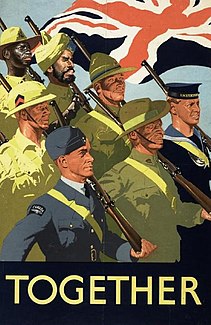
When the United Kingdom declared war on Nazi Germany in September 1939 at the start of World War II, the UK controlled to varying degrees numerous crown colonies, protectorates and the Indian Empire. It also maintained unique political ties to four of the five independent Dominions—Australia, Canada, South Africa, and New Zealand—as co-members of the then "British Commonwealth". In 1939 the British Empire and the Commonwealth together comprised a global power, with direct or de facto political and economic control of 25% of the world's population, and of 30% of its land mass.
The word Dominion was used from 1907 to 1948 to refer to one of several self-governing colonies of the British Empire. "Dominion status" was formally accorded to Canada, Australia, New Zealand, Newfoundland, South Africa, and the Irish Free State in at the 1926 Imperial Conference to designate "autonomous communities within the British Empire, equal in status, in no way subordinate one to another in any aspect of their domestic or external affairs, though united by a common allegiance to the Crown and freely associated as members of the British Commonwealth of Nations”. India, Pakistan, Ceylon were also dominions for short periods of time. The Balfour Declaration of 1926 recognised the Dominions as "autonomous communities within the British Empire", and the 1931 Statute of Westminster confirmed their full legislative independence. With the dissolution of the British Empire after World War II and the formation of the Commonwealth of Nations, use of the term was formally abandoned at the 1949 Commonwealth Prime Ministers' Conference and replaced with "member of the Commonwealth" to recognize the full autonomy of members.
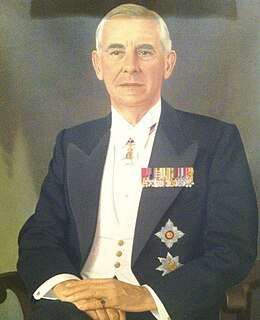
Sir Ernest Lucas Guest was a Rhodesian politician, lawyer and soldier. He held senior ministerial positions in the government, most notably as Minister for Air during the Second World War.

The modern political history of Zimbabwe starts with the arrival of white people to what was dubbed Southern Rhodesia in the 1890s. The country was initially run by an administrator appointed by the British South Africa Company. The prime ministerial role was first created in October 1923, when the country achieved responsible government, with Sir Charles Coghlan as its first Premier. The third Premier, George Mitchell, renamed the post Prime Minister in 1933.
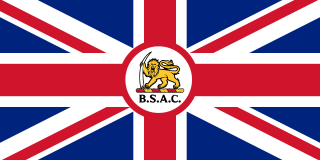
The British South Africa Company's administration of what became Rhodesia was chartered in 1889 by Queen Victoria of the United Kingdom, and began with the Pioneer Column's march north-east to Mashonaland in 1890. Empowered by its charter to acquire, govern and develop the area north of the Transvaal in southern Africa, the Company, headed by Cecil Rhodes, raised its own armed forces and carved out a huge bloc of territory through treaties, concessions and occasional military action, most prominently overcoming the Matabele army in the First and Second Matabele Wars of the 1890s. By the turn of the century, Rhodes's Company held a vast, land-locked country, bisected by the Zambezi river. It officially named this land Rhodesia in 1895, and ran it until the early 1920s.
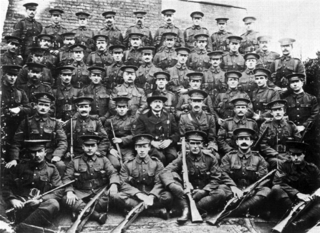
When the United Kingdom declared war on Germany at the start of World War I in August 1914, settler society in Southern Rhodesia, then administered by the British South Africa Company, received the news with great patriotic enthusiasm. The Company administrator, Sir William Milton, wired the UK government, "All Rhodesia ... ready to do its duty". Although it supported Britain, the Company was concerned about the possible financial implications for its chartered territory should it make direct commitments to the war effort, particularly at first, so most of the colony's contribution to the war was made by Southern Rhodesians individually—not only those who volunteered to fight abroad, but also those who remained at home and raised funds to donate food, equipment and other supplies.

The future Rhodesian Prime Minister Ian Smith served in the Royal Air Force (RAF) during the Second World War, interrupting his studies at Rhodes University in South Africa to join up in 1941. Following a year's pilot instruction in Southern Rhodesia under the Empire Air Training Scheme, he was posted to No. 237 (Rhodesia) Squadron, then stationed in the Middle East, in late 1942. Smith received six weeks' operational training in the Levant, then entered active service as a pilot officer in Iran and Iraq. No. 237 Squadron, which had operated in the Western Desert from 1941 to early 1942, returned to that front in March 1943. Smith flew in the Western Desert until October that year, when a crash during a night takeoff resulted in serious injuries, including facial disfigurements and a broken jaw. Following reconstructive plastic surgery to his face, other operations and five months' convalescence, Smith rejoined No. 237 Squadron in Corsica in May 1944. While there, he attained his highest rank, flight lieutenant.
The Hilton Young Commission was a Commission of Inquiry appointed in 1926 to look into the possible closer union of the British territories in East and Central Africa. These were individually economically underdeveloped, and it was suggested that some form of association would result both in cost savings and their more rapid development. The Commission recommended an administrative union of the East African mainland territories, possibly to be joined later by the Central African ones. It also proposed that the legislatures of each territory should continue and saw any form of self-government as being a long-term aspiration. It did however reject the possibility of the European minorities in Kenya or Northern Rhodesia establishing political control in those territories, and rejected the claim of Kenyan Asians for the same voting rights as Europeans. Although the Commission's recommendations on an administrative union were not followed immediately, closer ties in East Africa were established in the 1940s. However, in Central Africa, its report had the effect of encouraging European settlers to seek closer association with Southern Rhodesia, in what became in 1953 the Federation of Rhodesia and Nyasaland.

William John Harper was a politician, general contractor and Royal Air Force fighter pilot who served as a Cabinet minister in Rhodesia from 1962 to 1968, and signed that country's Unilateral Declaration of Independence (UDI) from Britain in 1965. Born into a prominent Anglo-Indian merchant family in Calcutta, Harper was educated in India and England and joined the RAF in 1937. He served as an officer throughout the Second World War and saw action as one of "The Few" in the Battle of Britain, during which he was wounded in action. Appalled by Britain's granting of independence to India in 1947, he emigrated to Rhodesia on retiring from the Air Force two years later.

Southern Rhodesia, then a self-governing colony of the United Kingdom, entered World War II along with Britain shortly after the invasion of Poland in 1939. By the war's end, 26,121 Southern Rhodesians of all races had served in the armed forces, 8,390 of them overseas, operating in the European theatre, the Mediterranean and Middle East theatre, East Africa, Burma and elsewhere. The territory's most important contribution to the war is commonly held to be its contribution to the Empire Air Training Scheme (EATS), under which 8,235 British, Commonwealth and Allied airmen were trained in Southern Rhodesian flight schools. The colony's operational casualties numbered 916 killed and 483 wounded of all races.
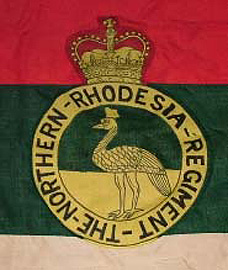
The Northern Rhodesia Regiment (NRR) was a multi-battalion British colonial regiment raised from the protectorate of Northern Rhodesia. It was formed in 1933 from elements of the Northern Rhodesia Police, which had been formed during Company rule in 1912. Made up of black other ranks and white officers, its motto was "Different in Race, Equal in Fidelity". This motto may have been adopted following native African porters during the First World War being recognised and compensated as couriers by the British.